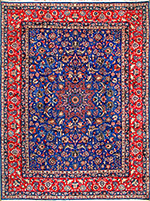Textiles Studies

Textile Research Works
Date of this Version
1992
Document Type
Article
Citation
Exhibition, The Textile Museum, Washington, DC, August 22, 1992 - February 15, 1993
Abstract
In southern regions of what was the Soviet Union lie five independent republics, the populations of which are predominantly Turkic: Kazakhstan, Kirghizia, Azerbaijan, Turkmenistan, and Uzbekistan. During the course of the past fifty years, each of these areas has seen increasing industrialization as part of the centralized planning of the Soviet economy. Today, throughout the region. privatization of industry is rapidly occuring. Accompanying these new developments, and as part of the political and economic changes of the last few years, there has been an increasing awareness of ethnic identity and cultural inheritance. This may be expressed through literary and intellectual movements, or symbolically by the adoption of non-cyrillic alphabets which were used before Russian domination, or by wearing traditional garments and promoting traditional styles of ornament.
But ethnic definition is never easy to determine out of context, and cosmopolitan Bukhara for the past several centuries has offered a startling mix of many peoples, including Uzbeks, Thjiks, Jews, Arabs, Russians, Hindus, Turkmens, Persians, Afghans, and Chinese. Robes (khalat) were given as gifts of honor, bestowed upon guests and selected individuals by members of the ruling aristocracy. Cloth and clothing became means of visual communication to convey information regarding a person's status and role, religious affiliation, and level of wealth, even more than expressing personal preference. While many such meanings are now lost to history, some may be reconstructed from diverse sources. The production of silk in and around the city of Bukhara assumed social significance historically, and cotton became a cash crop in the 19th century; cotton remains the major crop of Uzbekistan. Many surviving textile monuments today command an appreciation for their stark forms, clear sense of color and design, and penchant for dramatic display. Three of the most characteristic forms of textile art from Bukhara and surrounding regions represent three distinct textile technologies: 1) ikat, 2) Pile carpet weaving, and 3) Embroidery (suzani)
Included in
Art and Materials Conservation Commons, Art Practice Commons, Fiber, Textile, and Weaving Arts Commons, Indigenous Studies Commons, Museum Studies Commons


Comments
Copyright © 1992 The Textile Museum